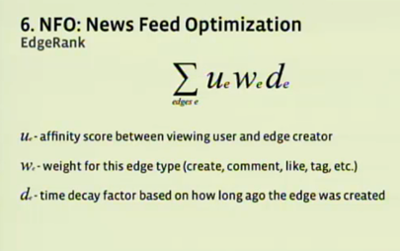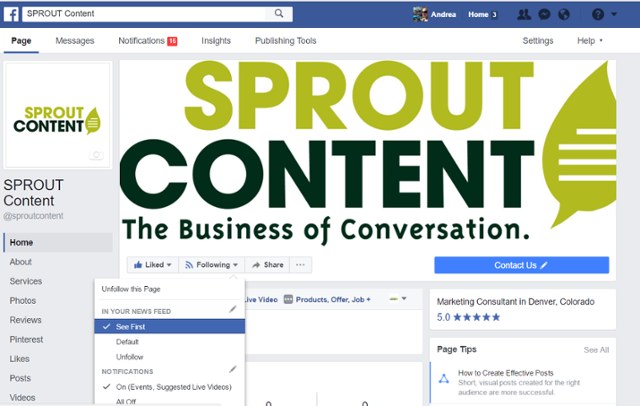Counteract Facebook’s Algorithm Changes to Reach More than 2% of Your Fans
— May 10, 2017
As the numbers keep plummeting, so do marketers’ dreams of having their brand’s content seen on Facebook organically. The latest figure shows that your company’s organic Facebook reach could be as low as 2% (or even lower in some cases), but the scariest news is that one day that number is likely to drop all the way to zero. It’s definitely an uphill battle for marketers against the most dominate social network worldwide, but there are steps you can take to fight the algorithm changes.
A Brief History of Facebook Reach Decline
Let’s take a look at how we got where we are today with organic Facebook reach.
2006: Facebook launches News Feed with a basic algorithm that determines the order in which posts appear based on the type of posts. For instance, a post with text would be ranked lower than a post with a link or image.
2007: Facebook launches Fan Pages. The assumption is that anyone in your fan base will see your page’s messages. The “Like” button also debuts this year.
2009: Facebook introduces a real-time news feed that displays every single story that is published, but users complain of being overwhelmed with content.
2010: Facebook introduces EdgeRank, which had 3 primary pieces to determine ranking of content:
- Affinity — How close is the relationship between the user and the content/source?
- Weight — What type of action was taken on the content?
- Decay — How recent/current is the content?
Here’s a slide with the actual formula on it from Ari Steinberg’s presentation at the 2010 f8 conference:

2011: Facebook abandons EdgeRank for a more complex algorithm that incorporates machine learning. The goal is to have the algorithm match content to the individual needs and interests of every user.
2012: Facebook organic reach drops to 16% on average. That means only a fraction of your fans are seeing your posts in their News Feeds.
2013: The Facebook algorithm becomes intelligent enough to take into account 100,000 weight factors.
2014: Facebook organic reach drops to 6.5% on average, so even fewer fans are seeing your posts.
2016: Facebook adjusts its News Feed algorithm again, which further prioritized content from family and friends over Pages. Facebook warns Pages could anticipate a dip in organic reach which could be as low as 2% or even lower in some cases.
Think about that. Based on that 2% figure, for a brand with 10,000 fans, only 200 people will see its posts. If you had 1 million fans, only 20,000 would see your company’s posts.
Facebook acknowledges this is a pain point for businesses and describes two main reasons for the organic reach decline:
- There’s simply too much content being published on Facebook, which makes competition to be seen in News Feeds increasingly high.
- Facebook is committed to showing people the content that is most relevant to them, as opposed to showing people all possible content.
Some might list collecting more advertising revenue as a third reason for Facebook’s changes as it has increasingly become a “pay to play” platform. Of course, Facebook denies this. In a 2014 organic reach update, Facebook’s VP of Advertising Technology, Brian Boland writes:
“Our goal is always to provide the best experience for the people that use Facebook. We believe that delivering the best experiences for people also benefits the businesses that use Facebook. If people are more active and engaged with stories that appear in News Feed, they are also more likely to be active and engaged with content from businesses.”
What This Means for Marketers
With fewer people seeing your posts, engagement levels are plummeting. People cannot like, comment, share, or click if they don’t see the post in their News Feed. And fewer of those interactions means fewer conversions, leads and customers for companies.
How Marketers Can Crack the Code
But don’t start waving your white flag of surrender just yet. There are ways you can minimize the impact with your Facebook marketing.
- Switch your posts to be more targeted and selective. You want to get as much interaction from a single post as possible rather than posting frequently. One way to do that is by targeting specific audiences for each post whether or not it’s sponsored.
- Remind your fans that they can see content from their favorite pages by clicking on Pages in the left sidebar of their News Feed.
- Remind your fans they can update their notification settings for your page.
- Encourage fans to engage with your posts by liking, sharing or commenting on them so they see more posts in the future.
- Turn to video to catch people’s attention. Facebook counts a “view” as just 3 seconds, but keep in mind that 85% of videos on Facebook are watched without sound. Be sure to include animation, text or add a close captioning file so that people quickly understand what they are watching.
- Go live. Facebook says people spend more than 3x more time watching a Facebook Live video on average compared to a video that’s no longer live. But there should be a reason you are broadcasting live, so think authentic, behind-the-scenes content that will attract and interest viewers.

- Don’t neglect your owned assets. Unlike Facebook, you have complete control of your website and blog. Spend most of your time creating content (blog posts, ebooks, case studies, videos) that will attract inbound traffic, leads and customers. Then, share those assets to Facebook for more exposure.
- Accept Facebook as a paid platform, and use ads to amplify your reach. Facebook’s targeting capabilities for advertising continue to improve. You can now customize ads to reach your targeted buyer persona based on demographics, interests, internet behavior and more.
In April, Facebook rolled out a series of tools that give marketers a more transparent look at how their ads are doing on the social network. The Insights dashboard has been redesigned to provide more metrics on ad campaigns, including impressions, amount spent and cost per results. Advertisers will also be alerted when audiences overlap in a way that affects performance or when certain users are overexposed to ads.
Digital & Social Articles on Business 2 Community
(32)

